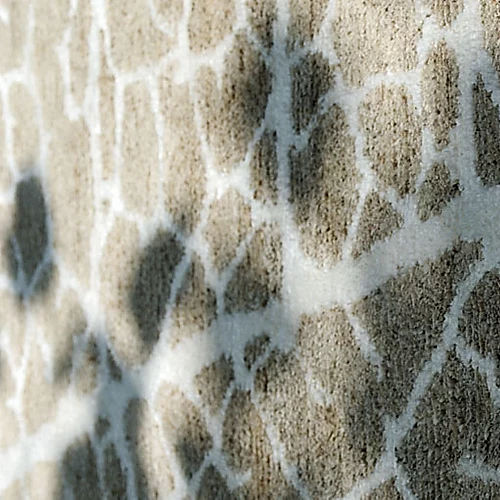The knotting technique is a completely manual method, by which the yarn is firmly attached to the warp by knots. The type of knot and its thickness differentiate the types of rugs made with this elaborate manual method. The value, quality and durability of the rug are directly proportional to the number of knots employed.
The hand knotting allows for complex designs, its main characteristics are meticulous workmanship, the high number of knots per square metre and the wide range of colour combinations.
Indotibetan hand knotting technique is particular, brought to India by Tibetan refugees, while the “sumak” knotting technique has Persian origins.
Handknotted rug, indotibetan technique, in vegetable fibers and bamboo silk. Tulsi is entirely made in natural
dye-free fibers. Of irregular shape, it is designed to be placed in the center or at the entrance of the house. We believe it is an auspicious amulet.
Technical information
Quality: Handknotted, 100 knots quality, bleached hemp, tibetan wool and bamboo silk.
Dimensions: 180 x 250 / 200 x 300
Available in custom sizes.
Pile height: 10 mm. approx.
Weight: 3,6 Kg/sqm approx.
Product care: Vacuum regularly. Sweep the carpet sur-face with a soft broom or vacuum clean it in the direction of the pile. Blot stains immediately, possibly with very little water, dry instantly with white absorbing cloth and hair dryer.If, after the above treatments, you’re not able to remove the stains, or if the rug is placed in heavy traffic public areas, we recommend the service of a professional clea-ner. Hemp is not an elastic yarn and will flatten after some time.






